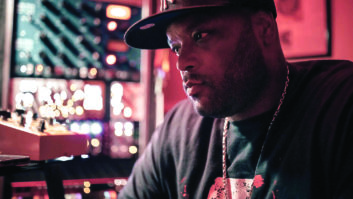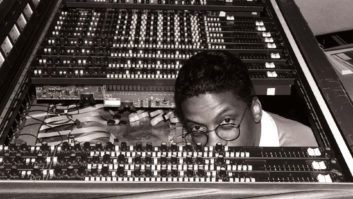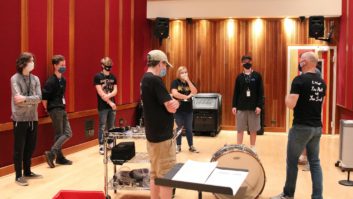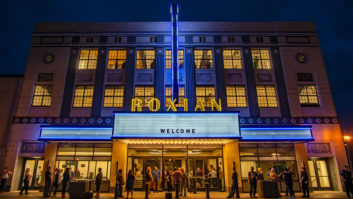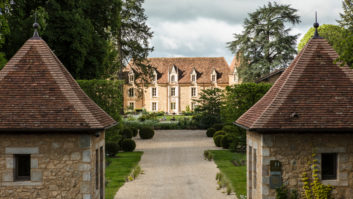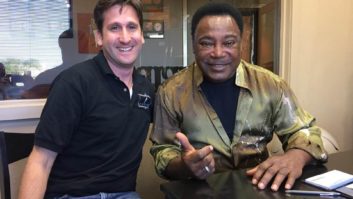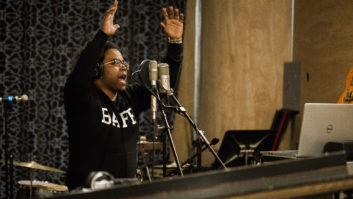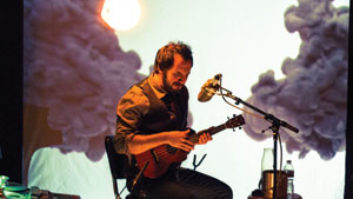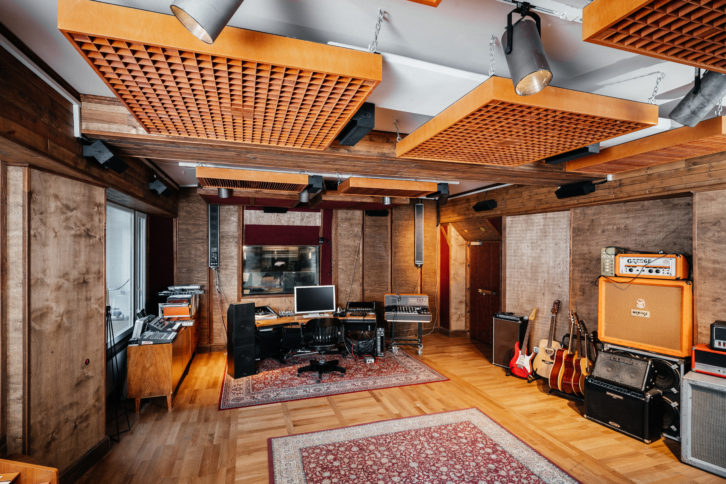
Mouse on Mars Get Creative with Meyer Sound’s Spacemap Go
Electronic Duo Explores Spatial Sound at Bewake Studios in Berlin
Bewake Studios in Berlin has become the first recording facility to install a multichannel monitoring system fully outfitted with Spacemap Go, Meyer Sound’s tool for spatial sound design and mixing. By offering this unique capability, Bewake looks to become a magnet for electronic musicians and sound artists seeking a laboratory for developing spatial sound designs that can be quickly scaled up for live performances in clubs, galleries and festival venues.
The installation of Spacemap Go was prompted by German electronic music icons Jan Werner and Andi Toma, who have redefined artistic conventions since 1994 with both their Mouse on Mars duo, as well as individual projects. They have been in residence at Bewake Studios since late 2018, and have occupied an exclusive sub-rented space and operated under the moniker Paraverse Studio. Their facility has a separate connection to the 50-square-meter main recording room—where Spacemap Go is available—which is shared with Bewake’s other clients.
“Andi and Jan first experienced an earlier version of Spacemap Go at Moogfest two years ago, which started an ongoing relationship with Meyer Sound,” notes Adam Kesselhaut, the studio’s co-founder and managing director, as well as a producer and songwriter. “That eventually led to the installation of Spacemap Go here. Because of the virus restrictions, they have mostly been using it for their own projects, but they have been developing content so we expect they will use that in small events, inviting a few select people. I know they are really itching to get going with Spacemap Go, to make some cool, crazy stuff and get other artists in here to experience it.”
The Meyer Sound loudspeaker complement comprises 14 UP-4slim compact self-powered loudspeakers bolstered by two USW-210P compact subwoofers for potent low end. Spatial mixing is effected by two Galileo GALAXY 816 Network Platforms under the control of the free Spacemap Go app for iPad. The system was installed and commissioned under the supervision of Ianina Canalis, Meyer Sound’s Berlin-based application architect, spatial audio specialist.
“For us it really makes sense to have access to a spatial sound setup in the studio,” explains Werner, speaking on behalf of the Mouse on Mars duo. “You don’t want to go into a venue with what was a stereo mix and then have to take it all apart and adjust it after you get there. You want to start mixing spatially in the studio, so you are listening that way from the beginning, in the eventual environment for the music.”
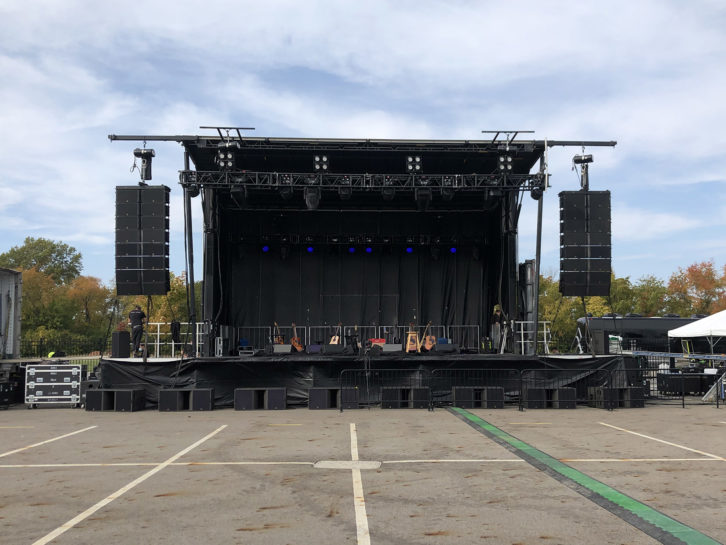
The American Drive-In Tour Rolled On With Brown Note Productions
Outdoor Concert Events Featured the Voices of Staind and Godsmack
Along with retro-tech like vinyl turntables and instant film cameras, which have enjoyed a popularity resurgence in recent years, the drive-in movie theaters of old are also experiencing a revival in 2020. But that boom hasn’t always been sparked by patrons flocking to catch the latest Hollywood blockbuster.
Case in point, Sully Erna and Aaron Lewis, frontmen for the hard rock bands Godsmack and Staind, very recently wrapped up “The American Drive-In Tour,” a 13-date, coast-to-coast run of “unplugged” concerts, many of which were staged in classic ’50s-era outdoor cinemas. To best reinforce every acoustic musical nuance and every word of intimate banter between these “old friends” of 25 years, Denver-based concert sound company Brown Note Productions chose to carry an L-Acoustics K2 system for the tour.
Produced by Danny Wimmer Presents, the promoter behind popular festivals like Sacramento’s Aftershock, Daytona Beach’s Rockville, and Louisville’s “Trifesta” (Bourbon & Beyond, Hometown Rising, and Louder Than Life), The American Drive-In Tour ran from early October through early November. Marking the first time that these two musicians have shared a stage, each stop of the nationwide trek featured an impromptu setlist of each artists’ hits, choice covers, and many private stories and laughs.
According to Brown Note Productions President Ryan Knutson, the choice of P.A. was simple yet elegantly effective: arrays of eight L-Acoustics K2 were flown on each side of the stage, while eight KS28 subs were horizontally spread out in linear arrangement on the ground below. Two ARCS Wide, one each at the far left and right corners of the stage, delivered coverage to two small VIP areas, and the entire system was driven via LA-RAK II touring racks loaded with LA12X amplified controllers.
“I made the decision to use K2 for its flexibility in pattern control, provided by Panflex, as well as its versatility to be deployed as either a single-point-hang or ground-stacked system based on what was needed each night,” Knutson shares. “With only three guys on stage—Aaron and Sully, plus a third guitarist that Sully has recorded with on his solo projects—the stages were relatively small, so K2’s light weight, compact profile, and high output were also key reasons that we carried the system.”
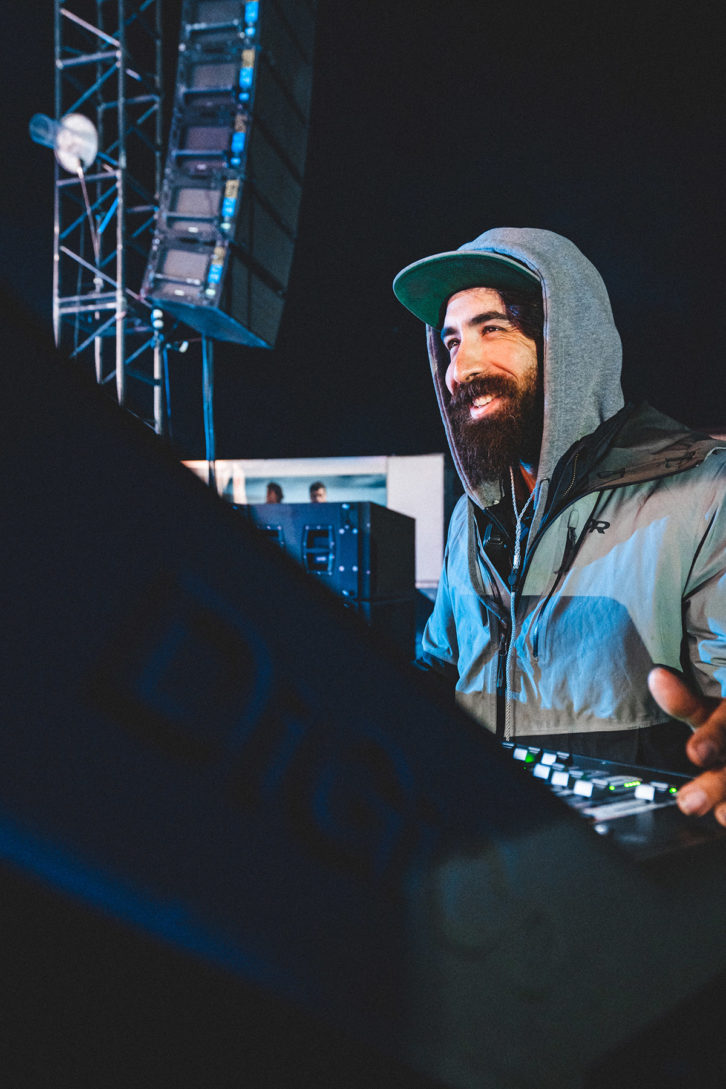
King & Country Celebrate With ‘A Drummer Boy Drive-In’
Blackhawk Audio Supplies DiGiCo Package for Outdoor Christmas Tour
Australian-born, Nashville-based sibling duo King & Country are currently out on the road with “A Drummer Boy Drive-In: The Christmas Tour” in support of their first holiday album, A Drummer Boy Christmas.
Performing 20 concerts between November 12 and December 20, Joel and Luke Smallbone’s show was backed by six additional multi-instrumentalists on stage and the sound reinforcement gear and expertise of Blackhawk Audio, which is deploying a pair of DiGiCo SD12 96 consoles for FOH and monitors each night.
Maintaining the same socially distanced drive-in show format that has become “the norm” for 2020, the current, largely outdoor tour is stopping at a variety of locations across the southern U.S., including arenas, fairgrounds, and drive-in movie theaters, as well as iconic sites like Pasadena’s Rose Bowl, Nashville’s Grand Ole Opry House, and Pensacola’s Five Flags Speedway FOH engineer Ralph Rivera and monitor engineer Ralph Rivera joined the band on this tour.
Connected via fiber, both the FOH and monitor consoles are paired with SD-Racks, each loaded with seven 32-bit “Ultimate Stadius” Mic Preamp modules, five 32-bit DAC modules, and two AES output cards. A DiGiGrid MGB interface at the house console allows Rivera to connect to his laptop for live multitrack recording of all the shows for virtual soundchecks using the Waves Tracks Live platform. Similarly, the SD12 96 monitor console is equipped with a DMI-WAVES SoundGrid expansion card for multitrack recording when desired.
Although there are eight musicians on stage, the input count is higher than might be expected because nearly every band member is a multi-instrumentalist. “Everyone in the band pretty much plays every instrument, and four of them are also background vocalists,” says Escobar, who has been with the group since January 2020. “Our guitar player will jump to the bass riser and play there for a few songs, then jump down to the synth station. Our drummer plays keytar for a song, and our bass player plays cello, mellophone, and marimba, so there’s a lot of moving around on stage. There’s also a trombone, a second drum kit, marching drums, and tube bells.”
Escobar is generating a dozen stereo monitor mixes—eight for the performers, plus four more for backline, playback tech, spare/guest mix, and himself—all of which are being heard on JH Audio JH13V2 PROs. “Every mix for every member is different for every song, so the quicker I can get to a fader, the better,” he adds. “Because we’re a one-truck tour where ‘space is everything,’ the SD12 puts a decent fader count into a small form factor that is good for me and great for our truck pack.”
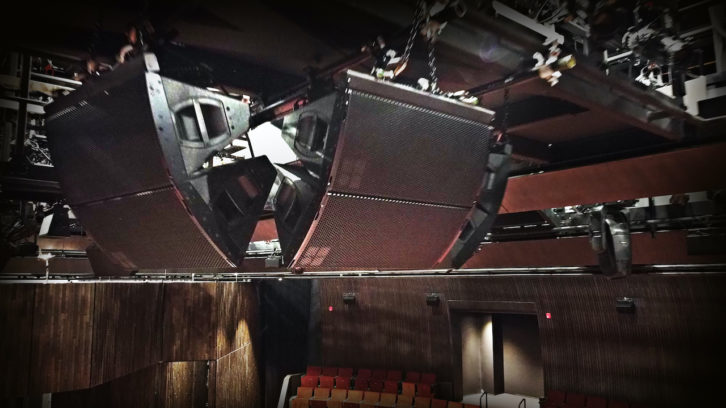
Shakespeare Theatre Renamed for Tom Patterson
Stratford, Ontario, Venue Updates With d&b A Series Rig
In 1952, with a $125 grant from the City Council, the late Tom Patterson set out to establish a six-week Shakespeare Festival in Stratford, Ontario. Now, 66 years later, the Stratford Festival operates year-round and has welcomed 28 million theatergoers, generating billions of dollars’ worth of economic activity for the city. In 2020, to mark the 100th anniversary of his birth, the Stratford Festival dedicated a new theater to Patterson.
“The old version of the Tom Patterson Theatre which this replaces, was built into what used to be, at various times, a casino, concert venue, curling club, and badminton club; and so because of the odd shape of the building, it evolved into a long runway-style thrust stage,” says Peter McBoyle, longtime Festival Sound Designer and audio design consultant for the project. “The shape of that stage, although not conventional for theater, was loved by actors, directors, and audiences, and the goal of the new 600-seat Tom Patterson Theatre was to keep the shape and feel of the old stage as much as possible but put it in a modern context.”
McBoyle said the shape of the stage presented a huge challenge from a sound point of view because of the long-thrust stage with audience members on three sides (four when the theatre is used in “the round”) and the audience is not that many rows deep. “We needed to cover a great length of audience and keep the energy off the stage. The acoustics were a challenge too because the audience sections are not that deep, so you quickly generate reflections off the back wall; and in the downstage end, the shape of the room is semi-circular and tends to direct the sound right back to the middle of the downstage area. The key to it all is having as much control as you can of the coverage of the main sound system to keep the sound where you want it and avoid sending it where you don’t.”
Knowing the room, he chose a d&b A-Series augmented array. “The tight vertical coverage pattern of the A-Series (30 degrees) and the control you get arraying them with small splay angles allowed us to really address these challenges,” notes McBoyle. “We were able to get the coverage where needed and have it drop off dramatically where not required. We originally started the design of the system around the d&b T10 which is what we have at our Festival Theatre, but the Tom Patterson Theatre just doesn’t have the height to deploy line arrays. So, the A-Series was the perfect tool for the applications being somewhere between line array and point source.”
The system was installed by Horizon of London, Ontario, in conjunction with the Stratford Festival IATSE crew. McBoyle was the system designer and also verified and tuned the system. Michael Duncan is the head of sound for the Tom Patterson Theatre and he worked with McBoyle on the design and oversaw the installation and commissioning throughout the project. David Campbell is an Associate Technical Director who manages the sound department for the entire Festival, and he was very much involved in the process from the beginning as was Greg Dougherty who is the Technical Director for the Tom Patterson Theatre.
The main system consists of five flown arrays of A-Series each with two AL90s in a vertical array. Three of the arrays sit downstage center to cover the downstage end of the curved audience seating. The other two arrays hang further upstage to pick up the coverage from the downstage arrays to provide even coverage of the entire audience seating area. In addition, there are two 21S subwoofers flown above the center of the stage to provide even LF to the entire venue. 26 x 8S loudspeakers were installed as FX speakers (16 as surround speakers focused over the audience and 10 in a new overhead position. All d&b cabinets are powered by 30D and 10D amplifiers. Control and configuration were made simple with the d&b R1Remote control software.
Due to Covid-19 restrictions, the theatre has not yet been used as the entire 2020 season was canceled.
